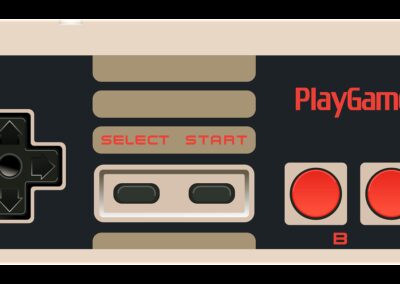Large Language Models (LLMs) are a pivotal innovation in artificial intelligence, reshaping how we interact with technology. These sophisticated models, trained on vast datasets, excel in understanding and generating human language, making them indispensable tools in various sectors. From enhancing customer service with natural language processing to driving advancements in automated content creation, LLMs are at the forefront of technological progress. Their integration into business operations signifies a major leap in efficiency and capability, underscoring their growing importance in today’s digital landscape.
What is a Large Language Model (LLM)?
A Large Language Model (LLM) is a type of artificial intelligence program designed to understand, interpret, and generate human language. Built using vast amounts of text data, these models can perform a variety of language-based tasks, such as translation, summarization, and question-answering, with a high degree of proficiency. Their scalability and complexity enable them to provide nuanced and contextually relevant responses, making them valuable assets in technology and business applications.
14 Relevant Large Language Models for Companies
Large Language Models (LLMs) are becoming increasingly crucial for businesses. Here, we will take a look at the 14 most popular LLMs, each offering unique capabilities and applications in the corporate sphere. From enhancing customer interactions to optimizing content creation, these models are shaping the future of business operations and decision-making. Understanding their functionalities, creators, and technical aspects is key for companies looking to leverage AI for competitive advantage.
1. Bloom
Description: Bloom is a large language model designed for various language tasks, including translation and content creation. It excels in understanding and generating human language, useful in diverse business applications.
Creator: BIG Science initiative.
Parameters: Significant number, indicating complexity and range.
Training Database: Trained on a broad, diverse dataset for robust language processing.
Fine-tuning options & Techniques: Customizable for specific tasks.
Licensing: Open-source.
Release Date: 2022.
2. Claude
Description: Claude is an advanced large language model specialized in understanding context and generating human-like responses. Its applications include customer support automation and content generation, providing efficient and scalable solutions for businesses.
Creator: Anthropic
Parameters: Not publicly available; however, it is estimated to have over 130 billion parameters.
Training Database: Trained on diverse datasets for comprehensive language understanding.
Fine-tuning Options & Techniques: Supervised fine-tuning and customization.
Licensing: Not an open-source model.
Release Date: July 2023
3. Cohere
Description: Cohere is a large language model designed for natural language processing tasks such as text generation, classification, and sentiment analysis. It is particularly adept at understanding context and nuances in language, making it valuable for customer interaction and content personalization.
Creator: Cohere Technologies Inc.
Parameters: The model boasts a significant number of parameters, denoting its capacity for detailed language understanding.
Training Database: Utilizes extensive and diverse language data for training.
Fine-tuning Options & Techniques: Offers options for fine-tuning to cater to specific business needs and applications.
Licensing: Commercial use licensing.
Release Date: The company was founded in 2019, and Cohere for AI was launched in 2023.
4. Dolly 2.0
Description: Dolly 2.0, distinct from text-based LLMs, is a model focused on image generation and manipulation. It interprets textual descriptions to create detailed and accurate visual representations. This model is valuable for creative applications in design and media industries.
Creator: Databricks
Parameters: The 12 billion parameter language model is based on the EleutherAI Pythia model family.
Training Database: Trained on a diverse set of images and text, specifically high-quality human-generated instruction on the following dataset, that was crowdsourced among Databricks employees.
Fine-tuning Options & Techniques: Offers several fine-tuning options, such as supervised fine-tuning, reinforcement learning, and self-supervised fine-tuning.
Licensing: Open-source
Release Date: April, 2023
5. Falcon
Description: Falcon is a less commonly mentioned large language model that was developed by the Technology Innovation Institute in Abu Dhabi. It offers a wide range of applications, from powering chatbots and customer service operations to serving as a virtual assistant and facilitating language translation. This model can also be used for content generation and sentiment analysis.
Creator: Technology Innovation Institute (TII)
Parameters: Falcon is available in two sizes: Falcon-7B and Falcon-40B, with 7 billion and 40 billion parameters, respectively.
Training Database: Falcon was trained on a massive dataset of text and code, including the Falcon RefinedWeb dataset, which is multimodal-friendly and crafted by TII.
Fine-tuning Options & Techniques: There are several fine-tuning options and techniques available, including supervised fine-tuning, reinforcement learning, and self-supervised fine-tuning.
Licensing: Open-source
Release Date: The release date of Falcon LLM is not publicly available.
6. GPT-3.5
Description: GPT-3.5, an iteration of the GPT-3 series, excels in text generation, comprehension, and conversation. It’s used widely in customer service automation, creative writing, and data analysis and is known for producing contextually relevant and coherent text.
Creator: OpenAI.
Parameters: Hosts an extensive number of parameters, enhancing its language processing capabilities.
Training Database: Trained on a vast and varied text corpus.
Fine-tuning Options & Techniques: Allows fine-tuning for specialized tasks and industries.
Licensing: Commercial licensing through OpenAI’s API.
Release Date: Released in 2022.
7. GPT-4
Description: GPT-4, the latest in the Generative Pre-trained Transformer series, is renowned for its advanced text generation and understanding capabilities. It is utilized in a variety of applications, including advanced conversational agents, content creation, and complex data analysis tasks.
Creator: OpenAI.
Parameters: Features a highly extensive number of parameters, signifying advanced language processing abilities.
Training Database: Trained on a massive and diverse text dataset.
Fine-tuning Options & Techniques: Supports fine-tuning for tailored applications.
Licensing: Available commercially through OpenAI’s API.
Release Date: Released in 2023.
8. Guanaco-65B
Description: Guanaco-65B is a less commonly known large language model and a fine-tuned chatbot model based on the LLaMA base models. It was obtained through 4-bit QLoRA tuning on the OASST1 dataset. It is intended purely for research purposes and could produce problematic outputs.
Creator: Tim Dettmers
Parameters: 65 Billion parameters.
Training Database: Fine-tuned on the OASST1 dataset, which is multimodal-friendly and crafted by the Technology Innovation Institute.
Fine-tuning Options & Techniques: Supports fine-tuning for tailored applications.
Licensing: Open-source
Release Date: The release date is not publicly available.
9. LaMDA
Description: LaMDA is a model developed for conversational applications, focusing on generating realistic and contextually appropriate dialogue. Its primary use is in chatbots and virtual assistants, offering enhanced user interactions through natural and coherent responses.
Creator: The Google Brain research team.
Parameters: Details on the number of parameters are not publicly available.
Training Database: Trained on a dataset tailored for conversational understanding.
Fine-tuning Options & Techniques: Information on fine-tuning capabilities is not available.
Licensing: Licensing details are not disclosed.
Release Date: The first-generation LaMDA was announced during the 2021 Google I/O keynote, while the second generation was announced in May 2022.
10. LLlaMA
Description: LLaMA is a language model known for its efficiency in language understanding and generation. It is suitable for tasks such as text analysis, translation, and content creation, offering reliable performance in various language-based applications.
Creator: Meta AI
Parameters: LLaMA is available in several sizes, including 7B, 13B, 33B, and 65B parameters.
Training Database: LLaMA was trained on a massive dataset of text and code, including the Falcon RefinedWeb dataset, which is multimodal-friendly and crafted by Meta AI.
Fine-tuning Options & Techniques: Fine-tuning capabilities include supervised fine-tuning, reinforcement learning, and self-supervised fine-tuning.
Licensing: LLaMA’s model was released to the research community under a noncommercial license. However, due to some remaining restrictions, the description of LLaMA as open source has been disputed by the Open Source Initiative.
Release Date: February, 2023
11. MPT
Description: MPT (Multilingual Pre-trained Transformer) is a family of large language models developed by Facebook AI Research that can understand and generate text in multiple languages. MPT is designed to be versatile and can be applied to many different use cases, including machine translation, natural language understanding, and text generation.
Creator: Facebook AI Research (FAIR)
Parameters: MPT is available in several sizes, including 1.2B, 2.6B, and 13B parameters.
Training Database: MPT was trained on a massive dataset of text in multiple languages, including the Common Crawl dataset, Wikipedia, and other publicly available information.
Fine-tuning Options & Techniques: MPT is capable of supervised fine-tuning, reinforcement learning, and self-supervised fine-tuning.
Licensing: MPT is licensed under the Creative Commons Attribution-NonCommercial-ShareAlike 4.0 International license, which allows anyone to use, modify, or extend it for noncommercial purposes.
Release Date: The release date is not publicly available.
12. Orca
Description: Orca is a state-of-the-art language model that demonstrates strong reasoning abilities by imitating the step-by-step reasoning traces of more capable LLMs. It is designed to explore the capabilities of smaller LMs and to show that improved training signals and methods can empower smaller language models to achieve enhanced reasoning abilities, which are typically found only in much larger language models.
Creator: Microsoft Research.
Parameters: Orca comes in two sizes, 7 Billion and 13 Billion parameters.
Training Database: Orca is trained with an expanded, highly tailored synthetic dataset. The training data was generated such that it teaches Orca various reasoning techniques, such as step-by-step processing, recall then generate, recall-reason-generate, extract-generate, and direct answer methods, while also teaching it to choose different solution strategies for different tasks.
Finetuning Options & Techniques: Orca is capable of finetuning.
Licensing: Open-source for noncommercial purposes.
Release Date: The release date of Orca is not publicly available.
13. PaLM
Description: PaLM is a large language model with applications in natural language understanding and generation. It’s designed for tasks such as text summarization, translation, and question-answering, offering significant capabilities in processing and generating human-like language.
Creator: The creator of PaLM is Google.
Parameters: PaLM is available in several sizes, including 8 billion, 62 billion, and 540 billion parameters.
Training Database: PaLM was trained on a diverse pre-training mixture, which includes hundreds of human and programming languages, mathematical equations, scientific papers, and web pages.
Fine-tuning Options & Techniques: Fine-tuning capabilities of Palm include supervised fine-tuning, reinforcement learning, and self-supervised fine-tuning.
Licensing: Open-source.
Release Date: The release date of Palm is not publicly available.
14. Vicuna 33B
Description: Vicuna 33B is a large language model, with details about its specific functions and applications not extensively covered in public sources. It is intended for research on large language models and chatbots.
Creator: The creator of Vicuna 33B is LMSYS.
Parameters: Vicuna 33B has 33 billion parameters.
Training Database: Vicuna 33B was fine-tuned on a dataset of approximately 125,000 conversations collected from ShareGPT.com.
Fine-tuning Options & Techniques: Vicuna 33B was fine-tuned with supervised instruction fine-tuning.
Licensing: Open-source for noncommercial purposes.
Release Date: The release date of Vicuna 33B is not publicly available.
The Future Shaped by Language Models
Large Language Models (LLMs) like GPT-4, Cohere, and Bloom represent a significant leap in AI capabilities, each with distinct functionalities and applications. Their integration into various industries showcases their versatility and potential to revolutionize business operations and decision-making processes. Despite some models being less documented, the available information highlights the vast landscape of LLM development. These models not only enhance current technological advancements but also pave the way for future innovations, positioning LLMs as key drivers in the ongoing evolution of artificial intelligence and its applications.







